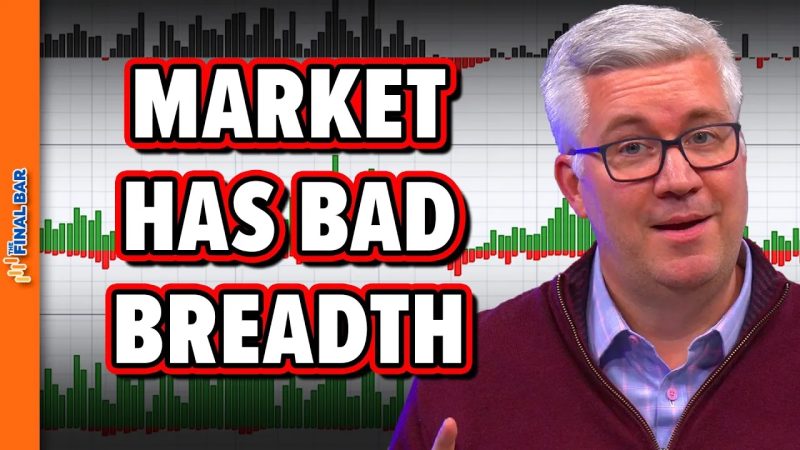Market breadth is a crucial indicator in the world of finance that measures the overall participation and strength of the market. It looks beyond the performance of individual stocks or indices to provide a more comprehensive analysis of market health. When market breadth is strong, it indicates widespread participation and a robust market environment. Conversely, poor market breadth can be a red flag for potential weakness in the market. But should investors be worried about poor market breadth, and what does it mean for their portfolios?
Poor market breadth occurs when only a small percentage of stocks are participating in a market rally, while the majority are not seeing similar gains. This scenario can be concerning for several reasons. Firstly, it suggests that the market rally is not broad-based, and the gains are concentrated in only a few sectors or stocks. Such a situation is often unsustainable, as it lacks the foundation of broad market support. Additionally, poor market breadth can signal underlying weaknesses in the market, such as slowing economic growth, sector rotation, or lack of investor confidence.
Investors should pay attention to the breadth of the market as it can provide valuable insights into the overall market sentiment and direction. While poor market breadth does not necessarily indicate an imminent market crash, it does warrant caution and vigilance. Investors may consider adjusting their portfolios to reduce risk exposure during periods of weak market breadth. Diversification across asset classes, sectors, and regions can help mitigate the impact of poor market breadth on investment portfolios.
It is essential for investors to conduct thorough research and analysis before making any investment decisions based on market breadth indicators. Consulting with financial advisors or market experts can provide valuable insights and guidance on navigating volatile market conditions. By staying informed and proactive, investors can position themselves to better weather market fluctuations and capitalize on investment opportunities.
In conclusion, poor market breadth can be a cause for concern for investors, as it may indicate underlying weaknesses in the market. While it is not a definitive signal of a market downturn, investors should monitor market breadth indicators and adjust their portfolios accordingly to manage risk exposure. By staying informed and proactive, investors can navigate market uncertainty and make sound investment decisions.

